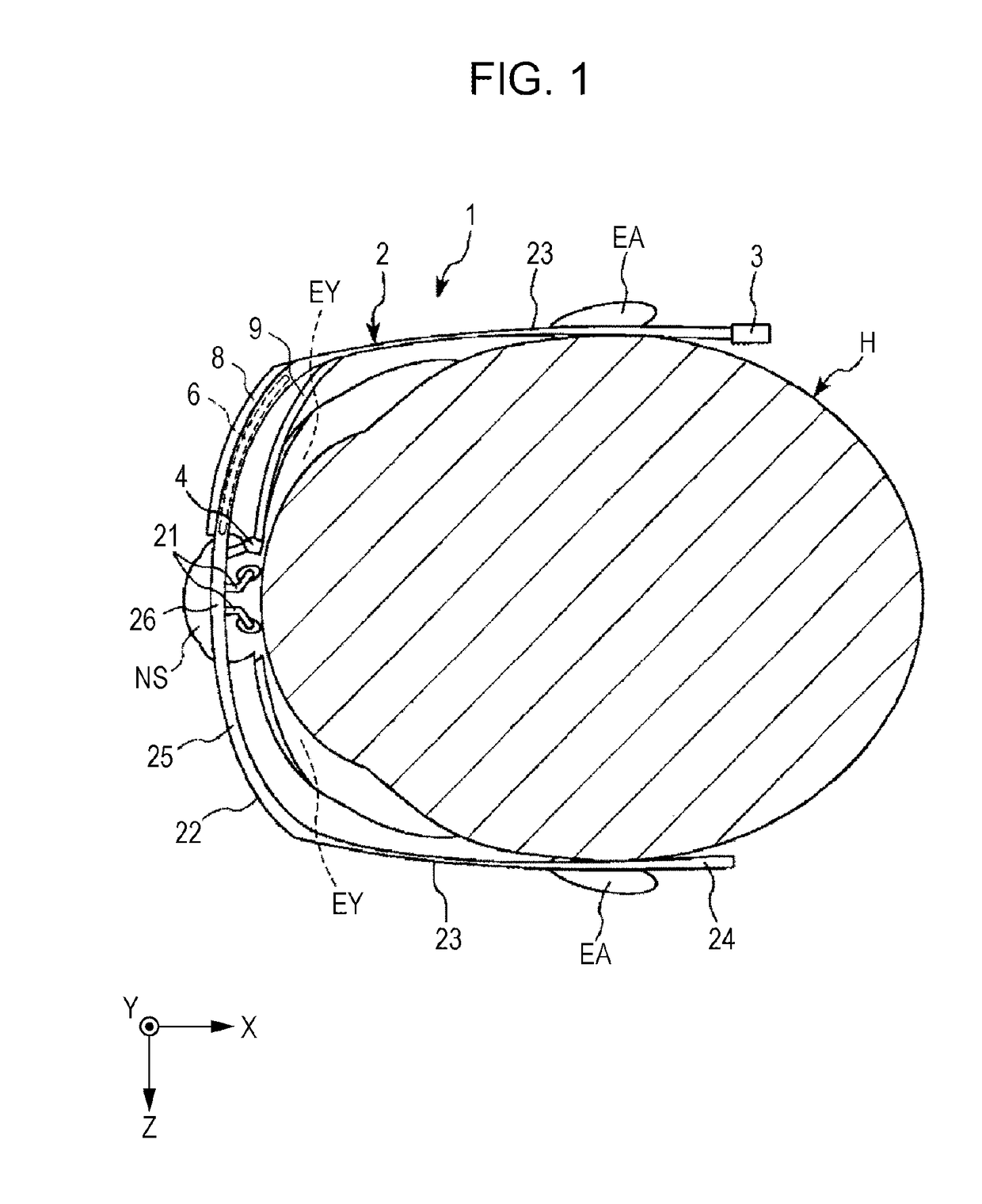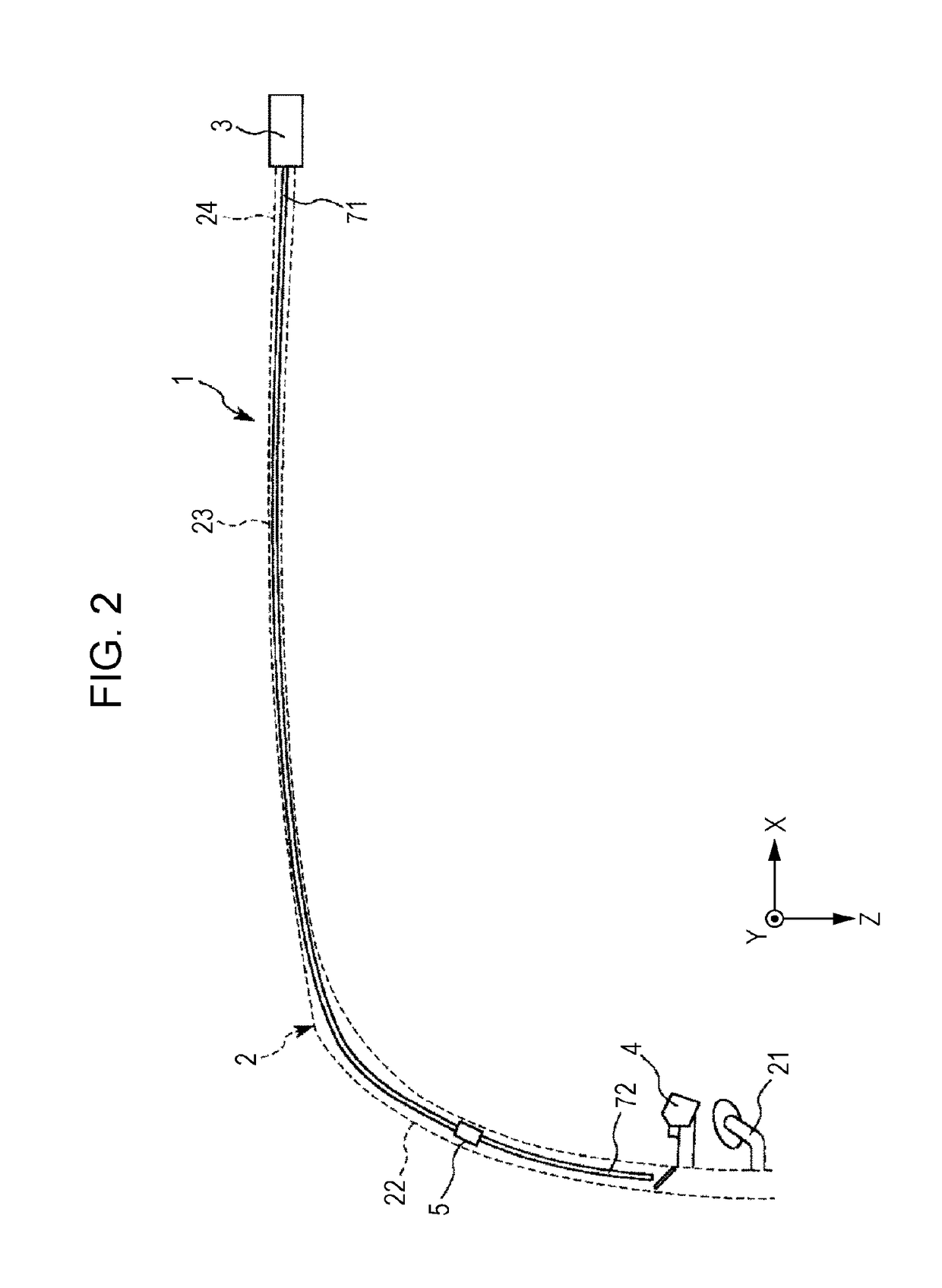Image display device
a display device and image technology, applied in the field of image display devices, can solve the problems of reducing visual perceptibility and difficulty in keeping the pupil of the user fixed, and achieve the effect of excellent see-through characteristics and high visual perceptibility
- Summary
- Abstract
- Description
- Claims
- Application Information
AI Technical Summary
Benefits of technology
Problems solved by technology
Method used
Image
Examples
first embodiment
[0036]First of all, an image display device according to a first embodiment will now be explained.
[0037]FIG. 1 is a diagram that illustrates a schematic structure of an image display device according to a first embodiment (head-mounted display). FIG. 2 is a partial enlarged view of the image display device illustrated in FIG. 1. FIG. 3 is a schematic structure view of a signal generation unit of the image display device illustrated in FIG. 1. FIG. 4 is a diagram that illustrates a schematic structure of a light scan unit included in a scan light emission unit illustrated in FIG. 1. FIG. 5 is a diagram for schematically explaining the functional operation of the image display device illustrated in FIG. 1.
[0038]In FIG. 1, for the purpose of easier description, X, Y, and Z axes are shown as three axes that are orthogonal to one another. The head of the axial arrow in the illustration is defined as “+ (plus)”, and the tail thereof is defined as “− (minus)”. The direction parallel to the...
second embodiment
[0140]Next, an image display device according to a second embodiment will now be explained.
[0141]FIG. 7 is a diagram for schematically explaining the functional operation of an image display device according to a second embodiment. FIG. 8(a) is a Y-directional view of the diffracting optical unit 9 illustrated in FIG. 7. FIG. 8(b) is an X-directional view of the diffracting optical unit 9.
[0142]In the explanation of the second embodiment below, the points of difference from the foregoing first embodiment are mainly explained, and an explanation is omitted for the same matters. In the drawings, the same reference signs are assigned to the same matters as those of the foregoing embodiment.
[0143]The diffracting optical unit 9 according to the second embodiment is the same as the diffracting optical unit 9 according to the first embodiment except for the difference in the grating pattern of each diffraction grating.
[0144]That is, in the diffracting optical unit 9 according to the presen...
third embodiment
[0151]Next, an image display device according to a third embodiment will now be explained.
[0152]FIG. 9 is a diagram that illustrates an image display device according to a third embodiment (head-up display). In FIG. 9, for the purpose of easier description, X, Y, and Z axes are shown as three axes that are orthogonal to one another. The head of the axial arrow in the illustration is defined as “+ (plus)”, and the tail thereof is defined as “− (minus)”. The direction parallel to the X axis is hereinafter referred to as “X-axis direction”. The direction parallel to the Y axis is hereinafter referred to as “Y-axis direction”. The direction parallel to the Z axis is hereinafter referred to as “Z-axis direction”.
[0153]In the explanation of the third embodiment below, the points of difference from the foregoing first and second embodiments are mainly explained, and an explanation is omitted for the same matters. In the drawings, the same reference signs are assigned to the same components...
PUM
 Login to View More
Login to View More Abstract
Description
Claims
Application Information
 Login to View More
Login to View More - R&D
- Intellectual Property
- Life Sciences
- Materials
- Tech Scout
- Unparalleled Data Quality
- Higher Quality Content
- 60% Fewer Hallucinations
Browse by: Latest US Patents, China's latest patents, Technical Efficacy Thesaurus, Application Domain, Technology Topic, Popular Technical Reports.
© 2025 PatSnap. All rights reserved.Legal|Privacy policy|Modern Slavery Act Transparency Statement|Sitemap|About US| Contact US: help@patsnap.com



